Buenos Aires, the vibrant capital of Argentina, is a city that blends European elegance with Latin American passion. From its tango-filled streets to its grand colonial architecture, every corner has a story to tell. There are various free things to do in Buenos Aires. While the city offers plenty of high-end attractions, you don’t need a big budget to experience its magic. Whether you’re a history buff, nature lover or art enthusiast, there is an array of incredible free activities. Get ready to soak in the culture and enjoy the city’s rich heritage, all without spending a peso.
Top 15 Free Things To Do In Buenos Aires
Here are the top 10 free things to do in Buenos Aires, allowing you to explore this charming city at absolutely no cost:
1. Stroll Through The Bosques De Palermo

Photo: Hrazdan33 / Wikimedia Commons
The Bosques de Palermo, officially known as Parque Tres de Febrero, is Buenos Aires’ largest and most scenic green space. Spanning over 400 hectares, it features beautiful lakes, shaded pathways, and gardens that provide a refreshing escape from the city’s fast-paced life. One of the park’s highlights is El Rosedal, a breathtaking rose garden with over 18,000 rose bushes and charming white bridges. Visitors can also rent paddle boats to explore the serene lake or visit the Poet’s Garden. Whether you’re up for a morning jog, a peaceful picnic or simply a leisurely walk, the park offers the perfect setting for recreation.
Location: Av. Infanta Isabel 110, C1425 Cdad. Autónoma de Buenos Aires, Argentina
Timings: 24*7
2. Explore The Museo Nacional De Bellas Artes
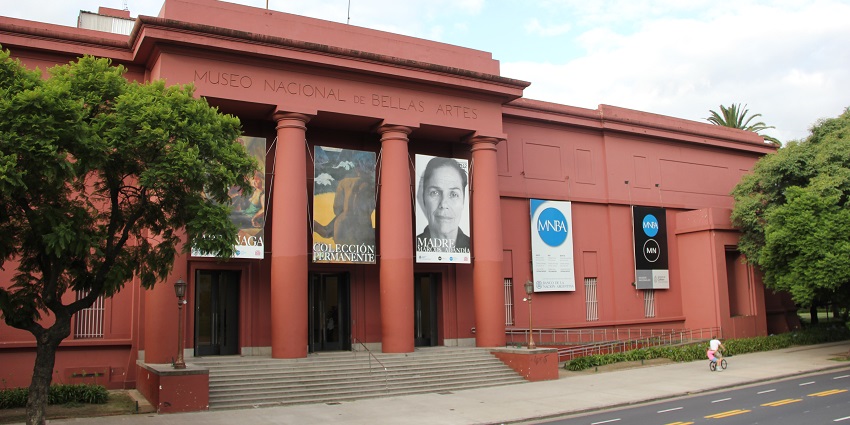
Photo: Lars Curfs (Grashoofd) / Wikimedia Commons
Art lovers should not miss the Museo Nacional de Bellas Artes (MNBA), one of Argentina’s premier art museums. With a permanent collection featuring over 12,000 works, it offers a remarkable journey through artistic history. The museum showcases European masterpieces from artists like Rembrandt, Monet, and Van Gogh. This alongside important Argentine artworks by Quinquela Martín and Xul Solar. Spread across multiple floors, its exhibits range from Renaissance paintings to modern installations. Entry to the museum’s permanent collection is completely free, making it an excellent cultural experience without the price tag.
Location: Av. del Libertador 1473, C1425 Cdad. Autónoma de Buenos Aires, Argentina
Timings: 11 AM – 7:30 PM
3. Wander Through Recoleta Cemetery
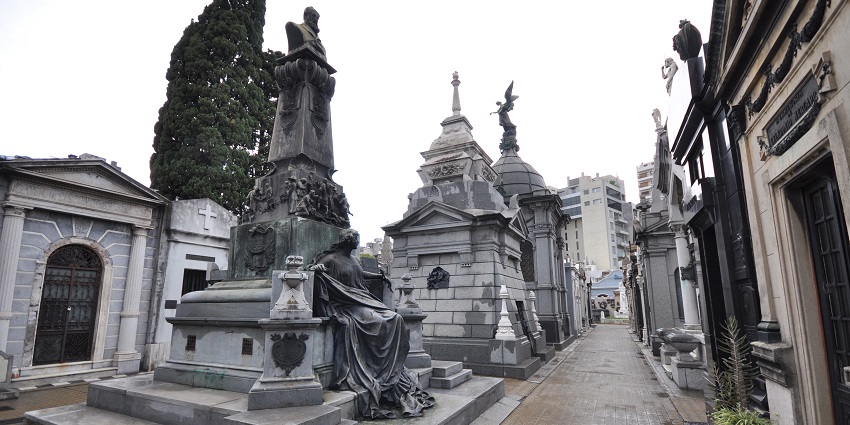
Photo: Jorge Láscar / Wikimedia Commons
Recoleta Cemetery is unlike any other burial site. It’s an open-air museum filled with elaborate mausoleums, intricate statues, and stories of Argentina’s most influential figures. Spread over 14 acres, the cemetery features stunning neoclassical, gothic, and art deco tombs. Perhaps its most famous resident is Eva Perón (Evita), whose modest mausoleum draws visitors from around the world. Other notable burials include former presidents, Nobel laureates, and military heroes. Walking through its labyrinthine paths feels like stepping back in time, with each tomb telling its own historical tale. It used to be free but it now it now charges a minimal entry fee for foreign tourists.
Location: Junín 1760, C1113 Cdad. Autónoma de Buenos Aires, Argentina
Timings: 9 AM – 5 PM
4. Discover Street Art In Barracas
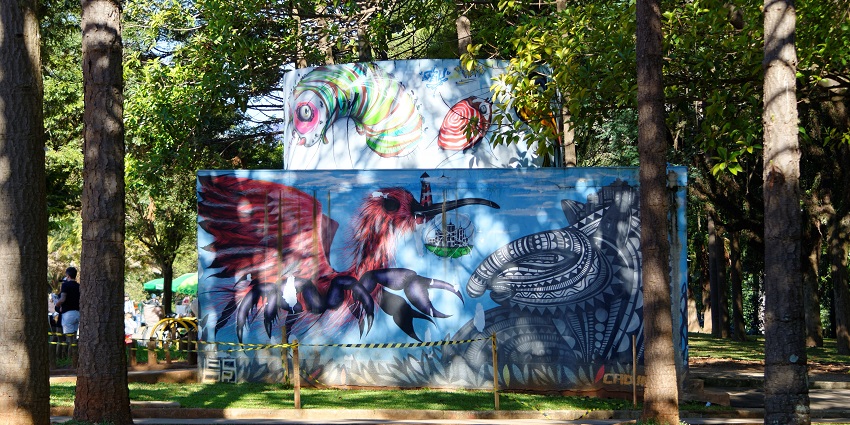
Photo: Slyronit / Wikimedia Commons / Image For Representation Only
Buenos Aires is known for its vibrant street art scene and Barracas is one of the best neighborhoods to explore this. With towering murals covering entire buildings, the area feels like an open-air gallery. One of the most famous pieces is “El Regreso de Quinquela” by Martín Ron. This stretches over 2,000 square meters and depicts a surreal maritime landscape. Another must-see is Calle Lanín, a hidden gem where houses are covered in colourful mosaic tiles, creating a dreamlike atmosphere. The best way to explore is simply by walking, taking in the detailed artwork and learning about the stories behind these public masterpieces.
Location: Near Lavadero and San Antonio Streets
Timings: Sunrise to sunset
5. Visit The Usina Del Arte

Photo: Andrés Bonafina / Wikimedia Commons
Once a historic power plant, the Usina del Arte is now one of Buenos Aires’ most important cultural centers. Located in La Boca, the venue hosts free concerts, contemporary art exhibitions, and film screenings. Its industrial – style architecture, with soaring ceilings and exposed brick walls, provides a striking setting for the diverse events. Families will also love the interactive exhibits and children’s activities that often take place on weekends. Whether you’re attending a live tango performance or a photography exhibit, Usina del Arte offers world-class cultural experiences.
Location: Agustín R. Caffarena 1, C1157 Cdad. Autónoma de Buenos Aires, Argentina
Timings: Varies
6. Browse The Feria De San Telmo
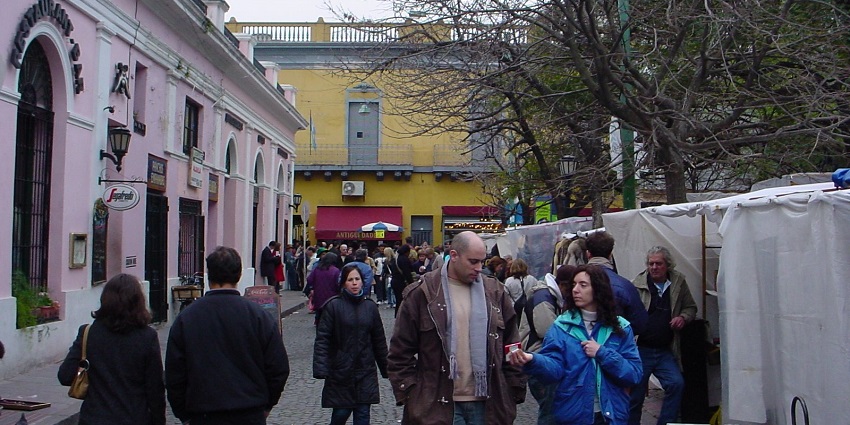
Photo: Alexandre Campolina / Wikimedia Commons
Every Sunday, the Feria de San Telmo transforms Calle Defensa into one of the most vibrant street markets. Stretching from Plaza Dorrego to Plaza de Mayo, this bustling fair offers an eclectic mix of antique stalls, handmade crafts, vintage collectibles and artisanal goods. The fair is particularly known for its rare antiques, including old books, gramophones, and silverware. Alongside the market, street performers entertain the crowds with live music, puppetry, and impromptu tango performances. Even if you don’t plan on buying anything, strolling through the fair is a fantastic way to soak in the local culture.
Location: Plaza Dorrego and Defensa Street, San Telmo, Buenos Aires
Timings: 10 AM – 4 PM
7. Attend A Free Concert At The Centro Cultural Kirchner
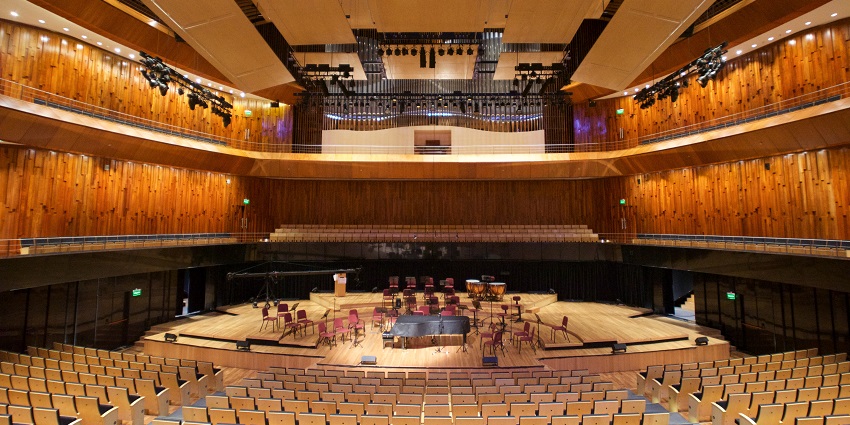
Photo: Blmurch / Wikimedia Commons
The Centro Cultural Kirchner (CCK) is one of the most important cultural venues in Argentina. It is housed in a beautifully restored neoclassical building that was once the central post office. Today, it serves as a hub for music, art, and theater, offering a wide range of free concerts and exhibitions. The main attraction is the Ballena Azul (Blue Whale) concert hall, renowned for its outstanding acoustics. Visitors can enjoy world-class classical, jazz, and contemporary music performances. The venue also features art galleries, film screenings, and guided tours of its impressive architecture.
Location: Sarmiento 151, C1041 Cdad. Autónoma de Buenos Aires, Argentina
Timings: 2 PM – 8 PM
8. Have A Tour Of The Casa Rosada

Photo: Diana2803 / Wikimedia Commons
A visit to Casa Rosada, Argentina’s iconic presidential palace, offers a unique glimpse into the country’s rich political history. With its distinctive pink façade, this landmark is a symbol of Argentina’s democracy. It has witnessed many historic moments, including Eva Perón’s famous balcony speeches. On weekends and holidays, visitors can take a free guided tour inside the palace, exploring opulent presidential rooms, grand staircases, historical artifacts, and beautiful murals. The tour provides a deeper understanding of Argentina’s political legacy. Given its historical significance, it is a must-visit for history buffs and those interested in Argentine politics.
Location: Buenos Aires, Argentina
Timings: 10 AM – 6 PM
9. Walk Along Puerto Madero’s Ecological Reserve
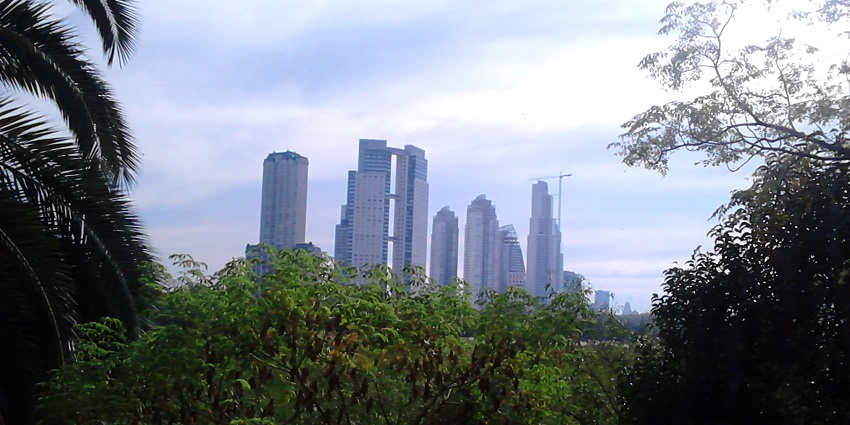
Photo: MartindesdeKorn / Wikimedia Commons
Tucked between the sleek skyscrapers of Puerto Madero and the Rio de la Plata, the Costanera Sur Ecological Reserve is a hidden gem. Spanning over 350 hectares, this vast green space is home to a diverse array of wildlife. These include over 300 bird species, capybaras, and turtles. The reserve features tranquil walking and biking trails, leading to stunning viewpoints along the riverbank. It’s an ideal place for nature lovers, photographers and joggers looking for a peaceful retreat from the city’s hustle and bustle. Pack a picnic and relax here since this is one of the best free things to do in Buenos Aires, Argentina.
Location: Av. Dr. Tristán Achával Rodríguez 1550, Cdad. Autónoma de Buenos Aires, Argentina
Timings: 8 AM – 5:30 PM
10. Experience A Free Tango Show At Plaza Dorrego

Photo: Barcex / Wikimedia Commons
Tango is at the heart of Argentine culture, and there’s no better place to experience it than at Plaza Dorrego. Every Sunday afternoon and evening, the square comes alive with free tango performances. Here skilled dancers gracefully showcase their moves to the sounds of live music. The setting is truly magical, surrounded by historic buildings, charming cafés, and cobblestone streets that add to the old-world charm. Many performers invite spectators to join in, making it a fantastic way to experience Buenos Aires’ most famous dance form.
Location: Humberto 1º 400, C1103 Cdad. Autónoma de Buenos Aires, Argentina
Timings: 24*7
11. Visit Plaza de Mayo
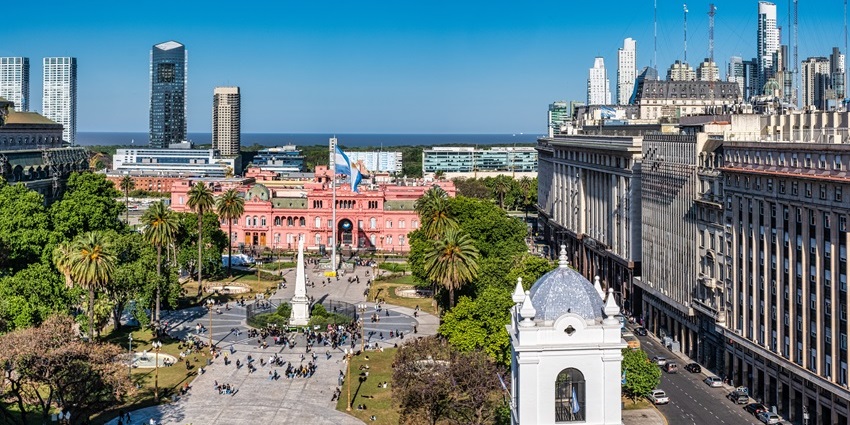
Photo: Armando Oliveira / Shutterstock
Visiting Plaza de Mayo is among the top things to do in Buenos Aires. It is a strong symbol of what it means to be an Argentine. It was here that the 1810 May Revolution began, which led to Argentina’s independence. There are famous buildings all around the square, like the Metropolitan Cathedral, the Cabildo, and the Casa Rosada (the presidential palace). At its centre are monuments that honour important times in the country’s past, such as the Pirámide de Mayo and the statue of General Manuel Belgrano on a horse.
Location: Av. Hipólito Yrigoyen s/n, C1087 Cdad. Autónoma de Buenos Aires, Argentina
Timings: 24*7
12. Explore The Cabildo
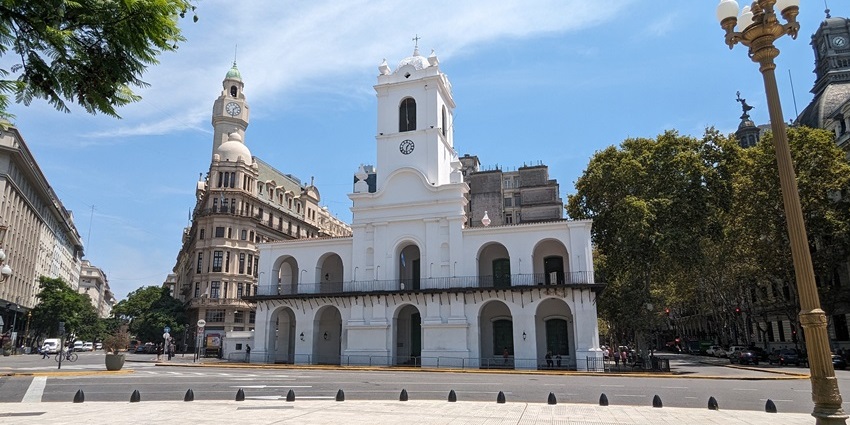
Photo: quiggyt4 / Shutterstock
One of the most important buildings from the Spanish era in Buenos Aires is the Cabildo, which is right next to Plaza de Mayo. During Spanish rule, the Cabildo was the home of the city council. It was also a key part of the May Revolution of 1810, which won Argentina its freedom. It is now home to the National Museum of the Cabildo and the May Revolution, which has displays about colonial life, revolutionary artefacts, and historical papers. The building’s exterior is whitewashed and has arched halls that make you think of the early days of the city.
Location: Bolívar 65, C1066 Cdad. Autónoma de Buenos Aires, Argentina
Timings: 10:30 AM – 6 PM
13. Tour The National Museum Of Decorative Arts
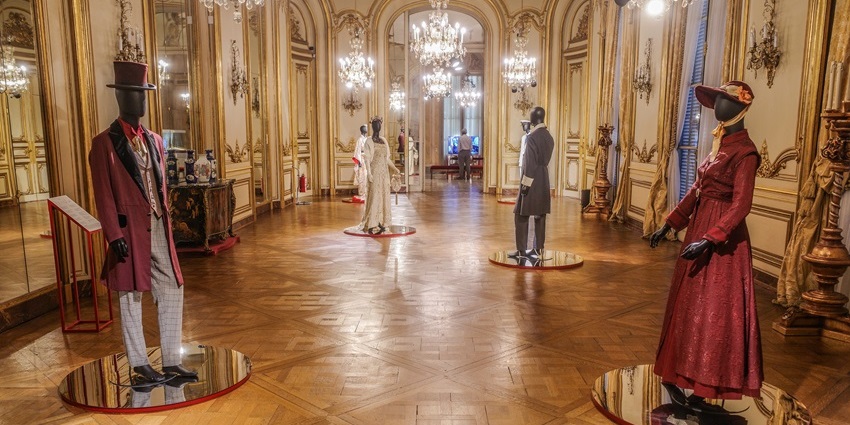
Photo: Mark Green / Shutterstock
In the Recoleta area, there is a beautiful French-style mansion that is home to the National Museum of Decorative Arts (Museo Nacional de Arte Decorativo). The mansion, which was built in the early 1900s, is a work of art in architecture. It has marble stairs, ornate rooms, and luxurious interiors. The museum has a collection of European and Asian paintings, sculptures, furniture, and decorative arts from many different ages. People can look at beautiful tapestries, china, and period furniture and feel the grandeur of Buenos Aires’s wealthy past at the same time.
Location: Av. del Libertador 1902, C1425 Cdad. Autónoma de Buenos Aires, Argentina
Timings: 1 PM – 7 PM
14. Walk Through The Buenos Aires Metropolitan Cathedral
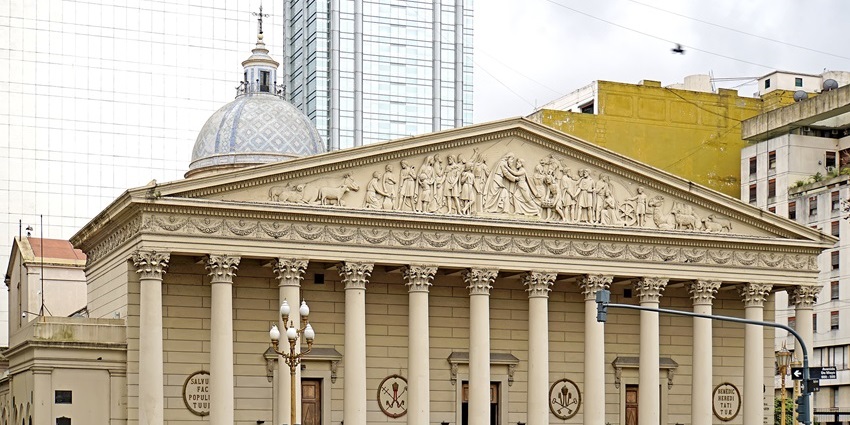
Photo: Dennis G. Jarvis / Wikimedia Commons
Experiencing the night views of the Buenos Aires Metropolitan Cathedral, the city’s main Catholic church, is among the top things to do in Buenos Aires at night. The cathedral sticks out from the other buildings nearby with its neoclassical front and large columns. Inside, people can see lovely altars, stained glass windows, and the tomb of General José de San Martín, who is admired as Argentina’s freedom hero. People also know the church as the place where Pope Francis served as Archbishop of Buenos Aires for twenty years.
Location: San Martín 27, C1004 Cdad. Autónoma de Buenos Aires, Argentina
Timings: 7:30 AM – 7:30 PM
15. Stroll El Caminito In La Boca

Photo: Leandro Neumann Ciuffo / Wikimedia Commons
El Caminito, a lively street and open-air museum in the colourful La Boca area, is among the best places to visit in Buenos Aires. There was a time when El Caminito was just a simple alley. Now it represents Buenos Aires’ immigrant history and artistic spirit. There are murals, sculptures, and street artists, like tango dancers and musicians, all along the street, making it feel festive all day. Craftspeople sell their goods, and people can enjoy the unique mix of Italian and Argentine culture.
Location: C1166 Buenos Aires, Argentina
Timings: Morning to afternoon
Major Highlights: Tango performances, art, murals, local crafts and souvenirs
Whether it’s marvelling at world – class street art, strolling through historic markets, or seeing a live tango show, the city offers countless experiences. These free things to do in Buenos Aires allow you to immerse yourself in the culture without spending a cent. Each free activity unveils a different side of Buenos Aires, allowing you to create lasting memories. So, lace up your walking shoes, embrace the local rhythm and let the city’s charm captivate you. Book your trip with TripXL today!
Cover Photo: Luis Argerich / Wikimedia Commons


 WhatsApp
WhatsApp
 Twitter
Twitter









